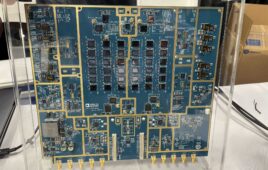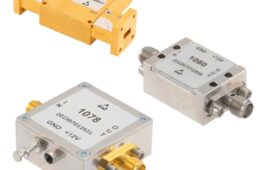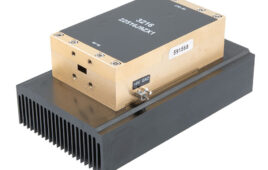Pasternack’s PE15S70xx variable-gain RF amplifiers bring output power up to 48 dB, depending on model.
RF transmitters often need adjustments to their output power based on channel conditions. When testing a receiver, you’ll need to test sensitivity and response over a range of input power. The PE15S70xx series of variable-gain amplifiers (VGAs) from Pasternack consists of 12 modules that cover several frequency bands from 0.5 GHz to 40 GHz. The PE15A7011 (1 GHz to 40 GHz) covers 5G FR1 and FR frequency bands for most applications. Other models include 500 MHz to 2 GHz, 4 GHz to 12 GHz, 26.5 GHz to 40 GHz, and others.
The VGAs, which use GaAs processes, bring small-signal gains that range from 42 dB to 48 dB, depending on model with a gain control range of 20 dB. Typical noise figure is 5 dB. All models use 0 to 5V control signal. As with most RF components, the VGAs have 50 Ω input and output impedances.
Single-quantity prices range from $6877.75 (0.5 GHz to 2 GHz) to 14,083.33(1 GHz to 40 GHz.






Tell Us What You Think!